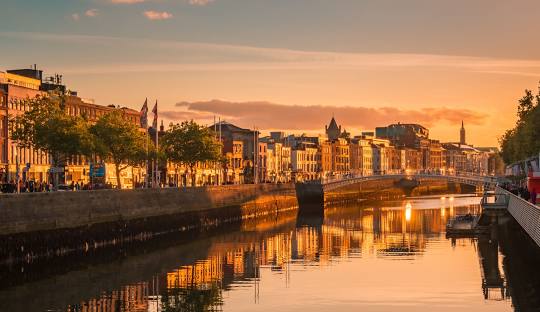
Dublin’s Geography and Waterways: A City Shaped by Land and River
Posted by Webjuice SEO Agency in Dublin on
Dublin’s geography combines natural beauty with urban development, offering a cityscape shaped by its rivers and surrounding terrain. Located in east-central Ireland, Dublin encompasses an urban area of approximately 345 square kilometers (133 square miles). The city lies at the mouth of the River Liffey, bordered by the Dublin Mountains, a subrange of the Wicklow Mountains, to the south and expansive flat farmland to the north and west.
A defining feature of Dublin’s geography is the River Liffey, which divides the city into two distinct areas: the Northside and the Southside. The Liffey’s course shifts at Leixlip, transitioning from a northeasterly direction to an eastward flow, marking a shift from agricultural landscapes to urban development.
The city’s origins trace back to where the River Poddle met the Liffey, forming a strategic location for early Viking settlements. Additional waterways like the Steine River, the Camac, and the Bradogue supported the city’s development, serving as vital resources during its formative years.
Two secondary rivers further shape the urban landscape. The River Tolka flows southeast into Dublin Bay, while the River Dodder runs northeast, converging near the mouth of the Liffey. These rivers, along with their tributaries, provide a network of waterways that enrich the city’s suburban and central areas.
Adding to Dublin’s aquatic infrastructure are the Grand Canal on the Southside and the Royal Canal on the Northside. These canals encircle the inner city, connecting Dublin to the River Shannon in the west and enhancing its historic role as a transport and trade hub.
Dublin’s harmonious blend of rivers, canals, and surrounding landscapes defines its unique character, fostering a connection between its natural features and its vibrant urban identity.